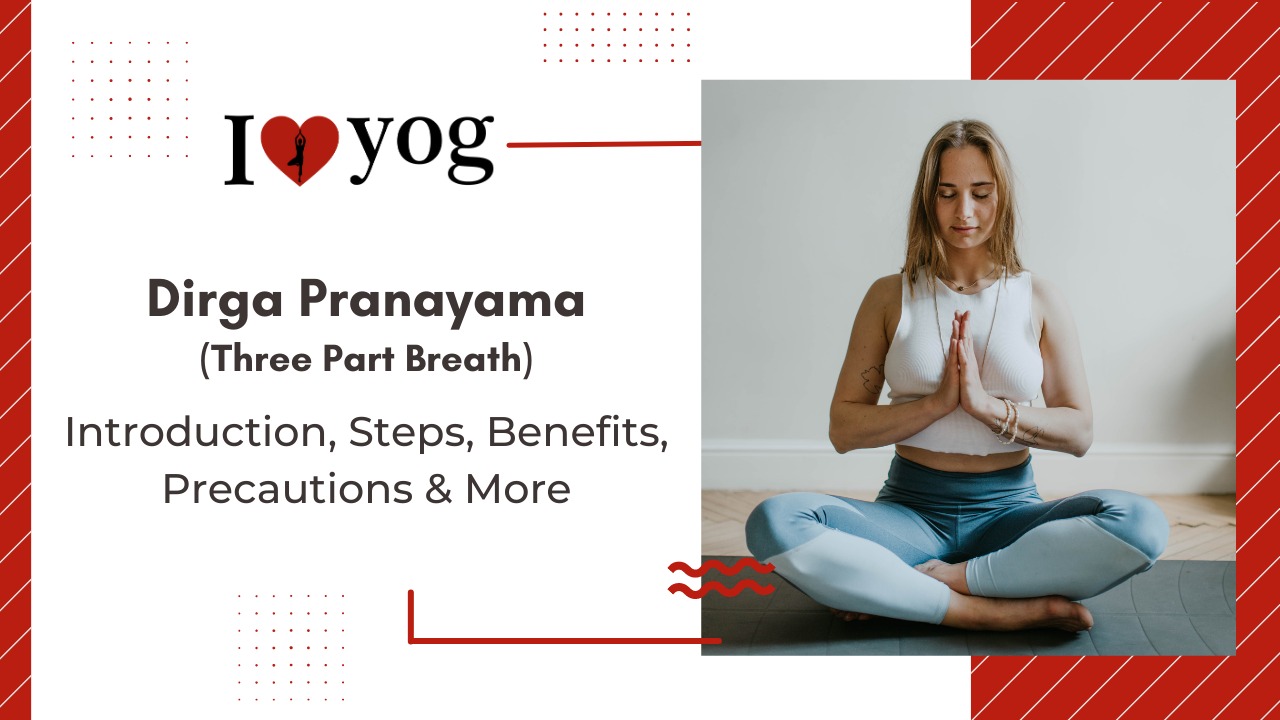Introduction of Dirga Pranayama
Three-part breath (Dirga Pranayama) is one of the most calming and grounding breathing exercises you can do. It really works to bring your attention to the present moment and align with the sensations of your physical body. For these reasons, it is often taught at the beginning of yoga classes, to transition students from their day-to-day work to the time they have set aside for yoga. It can function similarly to yoga if you practice at home. Do this pranayama when you first get onto your mat to shake off your day and get ready to practice
Steps of Dirga Pranayama
- Lie on your back with your eyes closed and relax your face and body. You can keep your legs straight or bend your knees and bring the soles of your feet to the mat if that’s more comfortable. As you bend your knees, let them rest against each other.
- Start by doing nothing except noticing your breath as it naturally inhales and exhales. If you’re feeling distracted by the activity in your head, try not to get caught up in the thoughts. Just notice them and then release them, bringing your attention back to the in-breath and out-breath.
- Start inhaling and exhaling deeply through your nose.
- With each inhale, fill your belly with your breath. Expand the abdomen with air like a balloon.
- With each exhalation, exhale all of the air from your abdomen through your nose.
- Draw your navel back toward your spine to make sure your stomach is empty. Continue to exhale deeply from your abdomen for about five breaths.
- This is part one.
- On your next inhale, fill your abdomen with air.
- Then, when the belly is full, breathe in a little more and allow that air to expand into the chest, causing the ribs to expand.
- As you exhale, deflate your chest first, sliding your ribs closer together, and then your abdomen, drawing your navel back toward your spine. Repeat these deep inhalations into your abdomen and chest for about five breaths.
- This is part two.
- On your next inhale, fill your abdomen and chest with air. Then sip a little more air and let it fill the upper chest to the collarbone, causing the area around the heart (called the heart center in yoga) to expand and lift
- As you exhale, let the breath go first from the upper chest, allowing the heart center to sink back down, then from the rib cage, allowing the ribs to slide closer together. Finally, deflate your abdomen and pull your navel back towards your spine.
- Continue at your own pace and eventually come to letting the three parts of the breath pass smoothly without pausing.
- Continue for about 10 breaths
Benefits of Dirga Pranayama
- Deep breathing helps oxygenate your blood and nourish your entire body.
- When you’re under stress, your breathing can be rapid and shallow.
- Conscious breathing like in this exercise will help you calm down.
- A greater flow of oxygen to the brain helps you become more focused and alert.
- This technique is taught to reduce stress and even treat panic attacks.
- You can use them throughout the day when you feel tense.
- Promotes effective breathing.
- Helps calm the body and mind.
- Improves concentration and supports mental health.
- Strengthens the lungs and serves as a basis for many other pranayama.
Precautions to be taken
Most individuals should be able to perform this technique without harm, but if you have asthma or other breathing issues, it can be challenging for you. If you feel dizzy, return to your normal breathing pattern
Frequently Asked Questions (FAQ)
What are the goals of this pranayama?
It improves focus and also improves breathing.
Can asthma patients do this pranayama?
In this case, you may need to hold your breath, so this pranayama should not be performed by patients with asthma or patients with breathing problems.
What is the level of this pranayama?
It is the pranayama for beginners.
Why is it called three-part breathing?
Due to the fact that you are actively breathing into three areas of your abdomen, Dirga Pranayama is also known as the “three-part breath.” The first position is the lower abdomen (at or just below the belly button), the second position is the lower chest (lower half of the rib cage), and the third position is the lower neck (just above the top of the rib cage Sternum).


